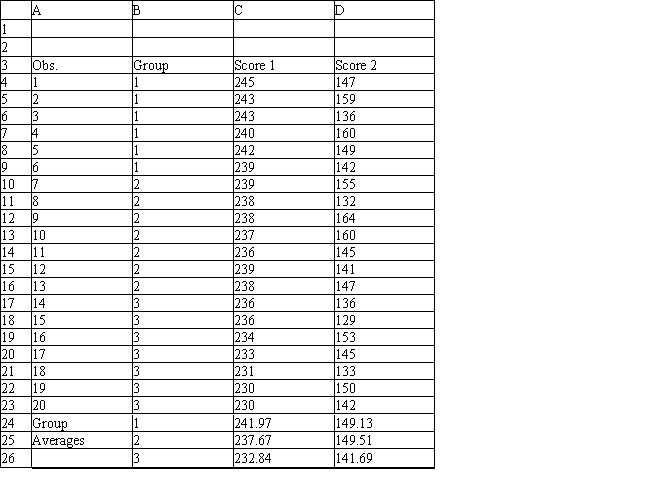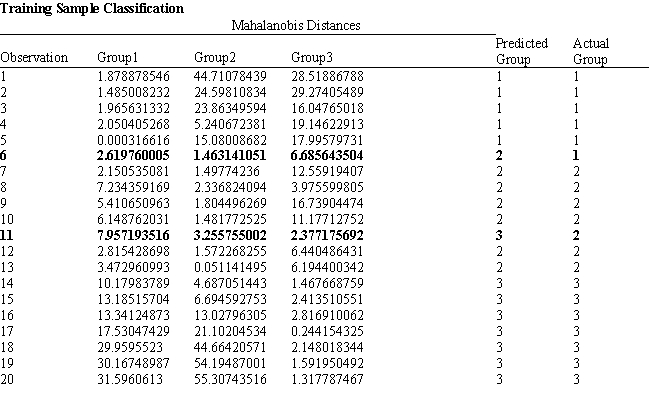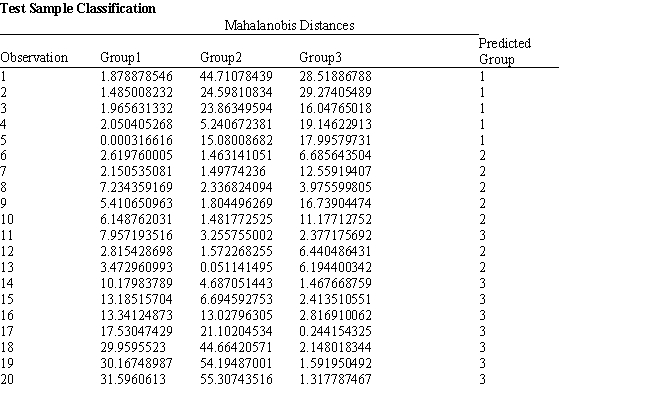Exhibit 10.5
The information below is used for the following questions.
A counselor wants to classify people as belonging to one of three groups based on two scores. The counselor has collected data on twenty people who are known to be in one of the three groups. The data for the problem are in the following spreadsheet. Relevant output is also included. 




-Refer to Exhibit 10.5. Based on the 20 observations in the model complete the following confusion/classification matrix. 
Definitions:
Deflationary Gap
A condition in which aggregate demand is lower than the aggregate supply potentially leading to deflation.
Full Employment GDP
The total value of all goods and services produced when the economy is operating at full employment, with no cyclical unemployment.
Federal Budget Deficit
The financial situation that occurs when a government spends more money than it receives in revenue, typically measured over a fiscal year.
Fiscal Policy
The use of government spending and taxation to influence the economy, including efforts to adjust the level of aggregate demand through public expenditure and taxation rates.
Q10: Refer to Exhibit 11.6. What formula should
Q39: A production company wants to ensure that
Q47: What formula should go in cell I5
Q55: In MOLP, a decision alternative is dominated
Q59: The deviational variables represent the amount by
Q61: Binary variables are:<br>A) a subset of integer
Q66: The β<sub>1</sub> term indicates<br>A) the average change
Q86: Business decision models can be categorized as<br>A)
Q99: A company produces three products which must
Q107: Refer to Exhibit 14.6. What is P(F∩H),